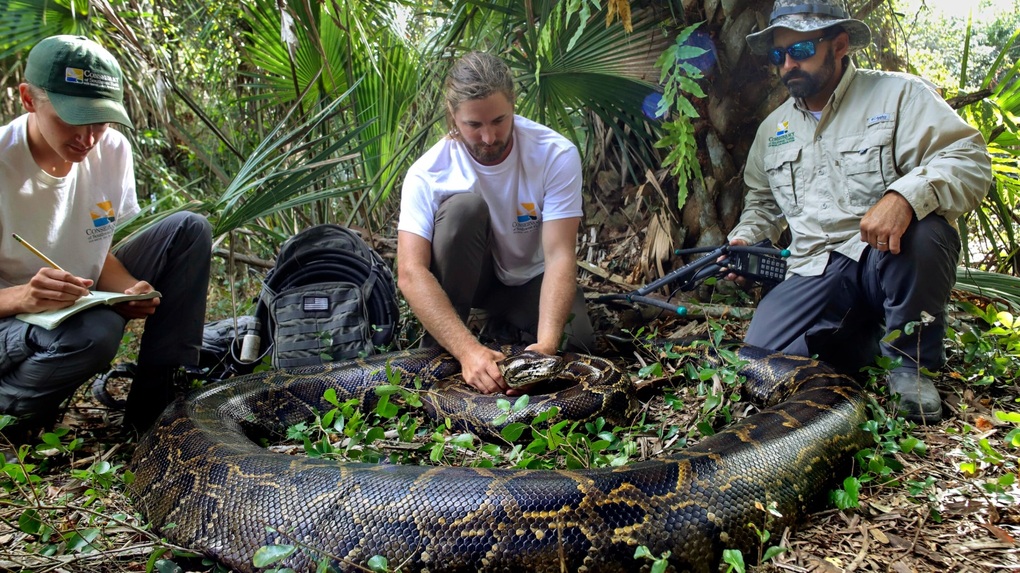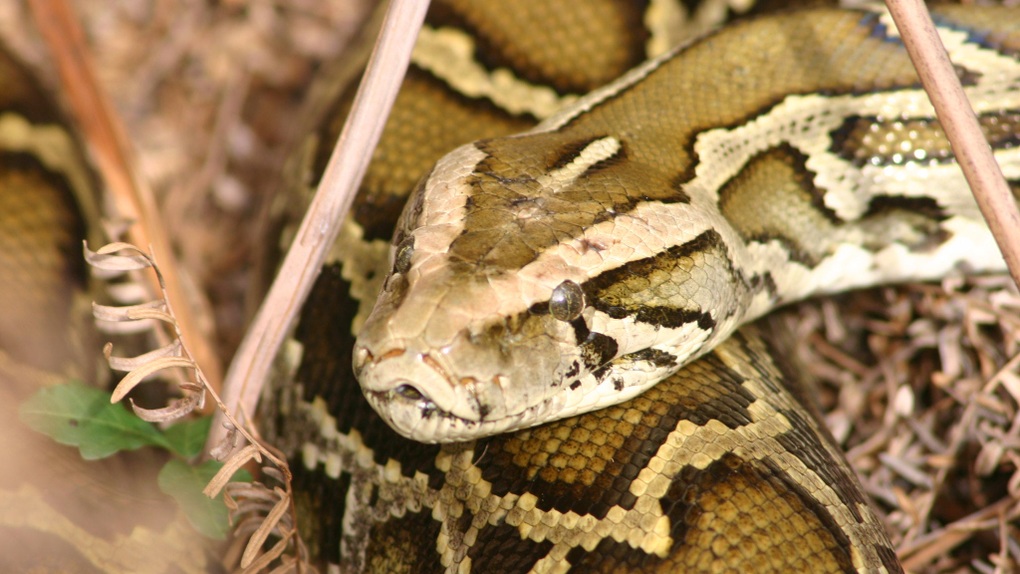An American professional hunter captured a female Burmese python measuring nearly 5 metres long and containing 60 eggs in its abdomen before the animal was able to lay eggs in the wild.
Use your bare hands to catch a giant python
Recently, a professional hunter named Mike Kimmel managed to capture a female Burmese python containing 60 eggs in its abdomen before it could be released into the wild.
Mike said the animal was about 4.9 metres long. With the help of a sniffer dog named Otto, the hunter tracked down the giant creature.
“If you notice that the base of her tail is larger than normal, it’s a clear sign that she’s getting ready to lay eggs,” said hunter Mike.
Mike, who has extensive experience, often catches pythons with his bare hands. According to him, the most humane way to kill them is to shoot the animal directly into its brain. This method is also the safest, as it ensures that it cannot escape.
“I have never let one escape because I usually catch them one by one,” the hunter revealed.
The hunter will then open up the abdomen to obtain the eggs. This is the largest natural egg in Florida, twice the size of a short-snouted alligator egg.
These eggs are often kept frozen for donation or displayed for educational purposes.

“Burmese pythons are a serious problem in the Everglades because they are extremely sensitive predators that leave native animals defenseless. This creature plays a major role in the decline of 90% of wild animals, such as otters or marsh rabbits,” said hunter Mike.
Efforts to eradicate it by all means but “still without success”
Currently, the number of this species of python tends to increase in the Everglades region, causing experts to admit that eradicating this invasive species may be an impossible task.
Despite major efforts to curb their spread over the past two decades, Burmese pythons continue to appear further north, threatening the state’s ecosystem.

Last February, the United States Geological Survey (USGS) considered this python “one of the most difficult invasive species worldwide.”
It is known that in the 1970s, this creature became a popular exotic pet in the United States. But then, the animals eventually grew so large that their owners could no longer keep them and released them into the wild.
By the 2000s, experts said, many generations of pythons were multiplying rapidly over a fairly large geographic area in the Everglades and South Florida.
Their excessive growth, which causes harm to many native animals, has led to regulations restricting the importation and ownership of pythons. But it was too late to stop their invasion.
Adult pythons in South Florida reach sizes too large for most predators to kill. The largest python ever recorded in Florida was nearly 20 feet long and weighed nearly 220 pounds. When captured, the animal had 122 eggs.
Pythons in Florida typically lay an average clutch of 11 to 84 eggs. Larger individuals may contain 79 to 87 eggs.
As a species that likes to hide and thrive in remote environments , experts have so far been unable to calculate exactly how many exist in Florida. But they estimate there are at least tens of thousands of them.
Every year, the local government organizes the “Python Hunting Challenge” contest with attractive prizes.
In addition to a team of professional hunters, the Florida government has established a hotline to report invasive species.
Experts say that although many different methods have been used to capture pythons, the tools are not widely appreciated because they are difficult to detect. To date, the eradication of this giant creature in South Florida has not been successful.




